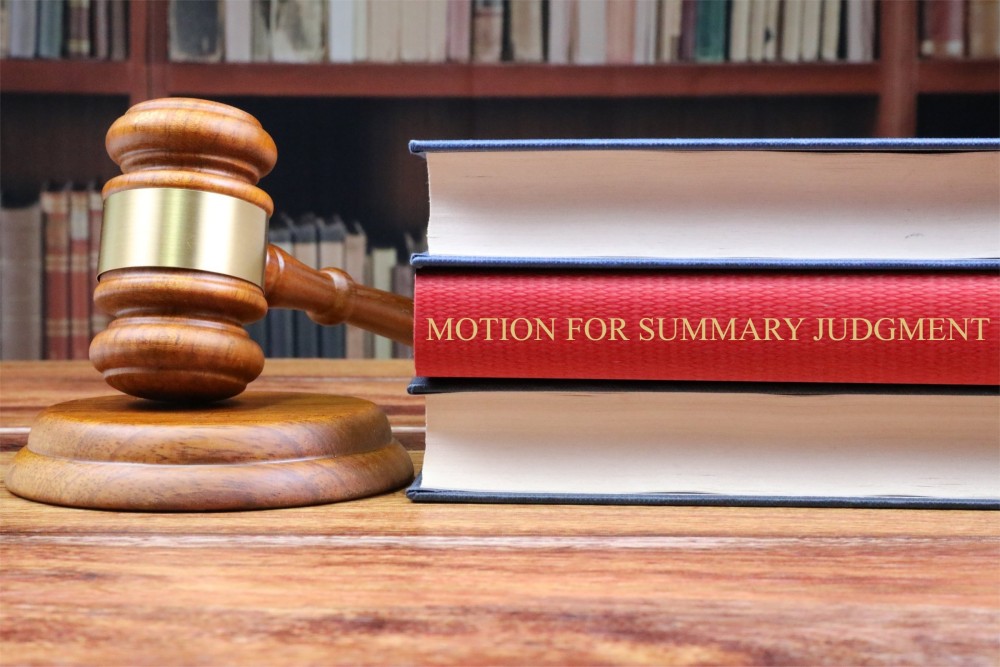Get Your Legal Documents Now!
Whether you are dealing with a complex family matter, facing criminal charges, or navigating the intricacies of business law, our mission is to provide you with comprehensive, compassionate, and expert legal guidance.

A motion for summary judgment (MSJ) is a powerful litigation tool used to resolve a case or specific issues without the need for a full trial. But filing a motion is not enough. To succeed, the moving party must present admissible evidence showing that there is no genuine dispute of material fact and that they are entitled to judgment as a matter of law.
What Evidence Is Needed for a Motion for Summary Judgment?
Introduction
A motion for summary judgment (MSJ) is a powerful litigation tool used to resolve a case or specific issues without the need for a full trial. But filing a motion is not enough. To succeed, the moving party must present admissible evidence showing that there is no genuine dispute of material fact and that they are entitled to judgment as a matter of law.
So, what kind of evidence actually moves the needle?
In this blog, we’ll break down the essential types of evidence needed to support a motion for summary judgment, including affidavits, discovery materials, contracts, and case law. If you’re preparing an MSJ, Legal Husk offers expertly drafted litigation documents that meet court standards and improve your chance of success.
Understanding the Legal Standard
Under Rule 56 of the Federal Rules of Civil Procedure, summary judgment is proper if:
“There is no genuine dispute as to any material fact and the movant is entitled to judgment as a matter of law.”
The court doesn’t weigh evidence like a jury would—it decides whether there’s enough evidence for a reasonable jury to rule in favor of the non-moving party. If the answer is no, summary judgment is granted.
But that determination hinges entirely on what evidence is submitted with the motion.
1. Affidavits and Declarations
What They Are:
Affidavits and declarations are sworn statements made under penalty of perjury that present facts the witness could testify to in court.
Why They Matter:
Key Considerations:
2. Discovery Materials
Types of Discovery Evidence:
Why They Matter:
Discovery materials often provide the bulk of the factual evidence in a case. A well-organized MSJ should rely heavily on what has been exchanged during discovery to:
3. Documentary Evidence
Examples Include:
Why They Matter:
Make sure all documents are properly authenticated—use affidavits or deposition testimony if needed to confirm origin and relevance.
4. Expert Reports and Testimony
When to Use Them:
What’s Required:
5. Legal Authority (Case Law & Statutes)
While not technically “evidence,” legal authority plays a key role in showing the court why your evidence supports judgment as a matter of law.
Use Legal Authority to:
Well-selected case law and statutory authority help the court understand the context and standard for evaluating your evidence.
How to Present Evidence in Your Motion
Structure Matters:
A strong MSJ includes:
Formatting Tips:
Common Mistakes to Avoid
The court will not dig through the record for you—your motion must connect the dots.
Why Choose Legal Husk for Summary Judgment Support?
At Legal Husk, we understand how to build a compelling, evidence-backed summary judgment motion. We help attorneys, pro se litigants, and legal teams draft:
You can purchase our professional litigation drafting services directly online, and our experienced team will help you prepare documents that comply with procedural rules and support your legal strategy.
Final Thoughts
A motion for summary judgment is only as strong as the evidence behind it. From affidavits and discovery materials to expertly cited case law, each piece of evidence must contribute to your claim that no genuine dispute of material fact exists.
With the right preparation—and the right support—you can turn the facts in your favor and secure a favorable ruling before trial.
📩 Need help drafting a summary judgment motion? Contact Legal Husk today to get professionally prepared documents that win cases.
Whether you are dealing with a complex family matter, facing criminal charges, or navigating the intricacies of business law, our mission is to provide you with comprehensive, compassionate, and expert legal guidance.
Comments